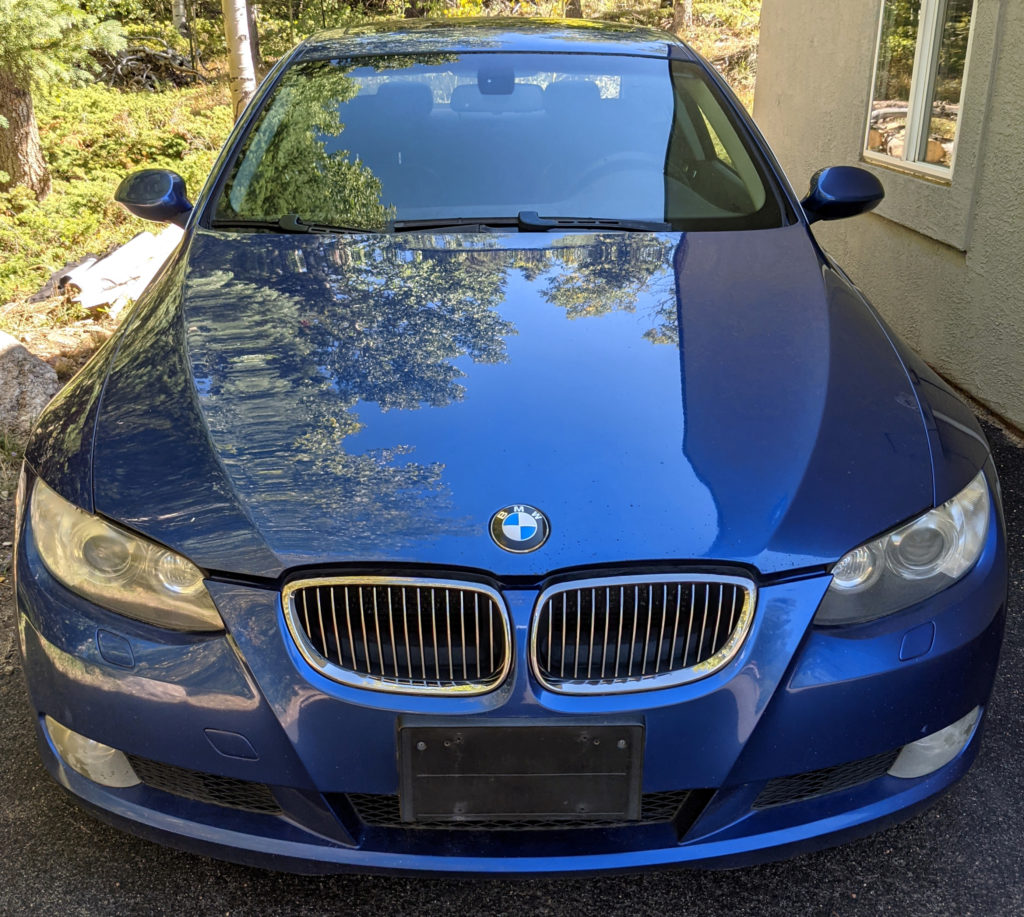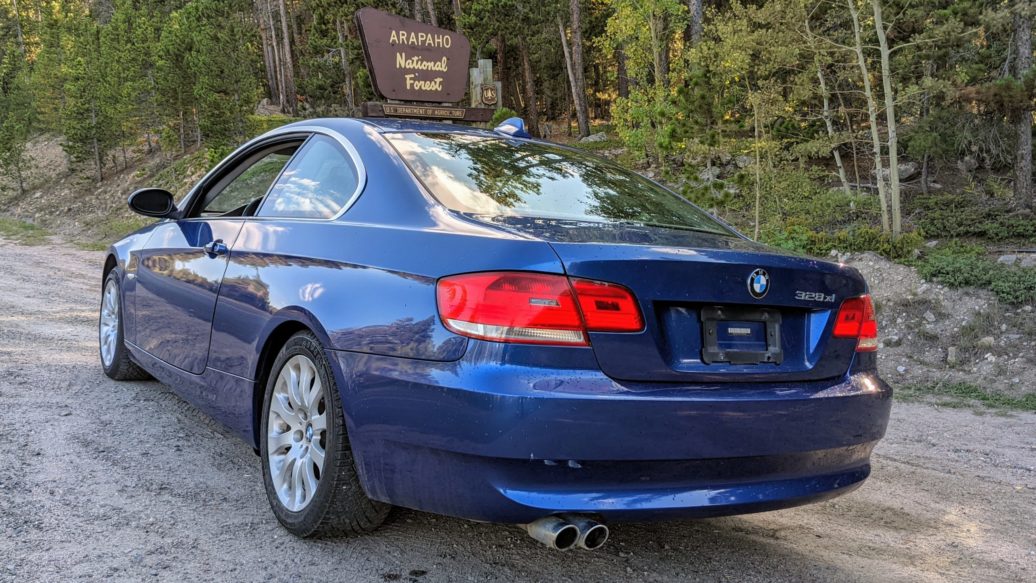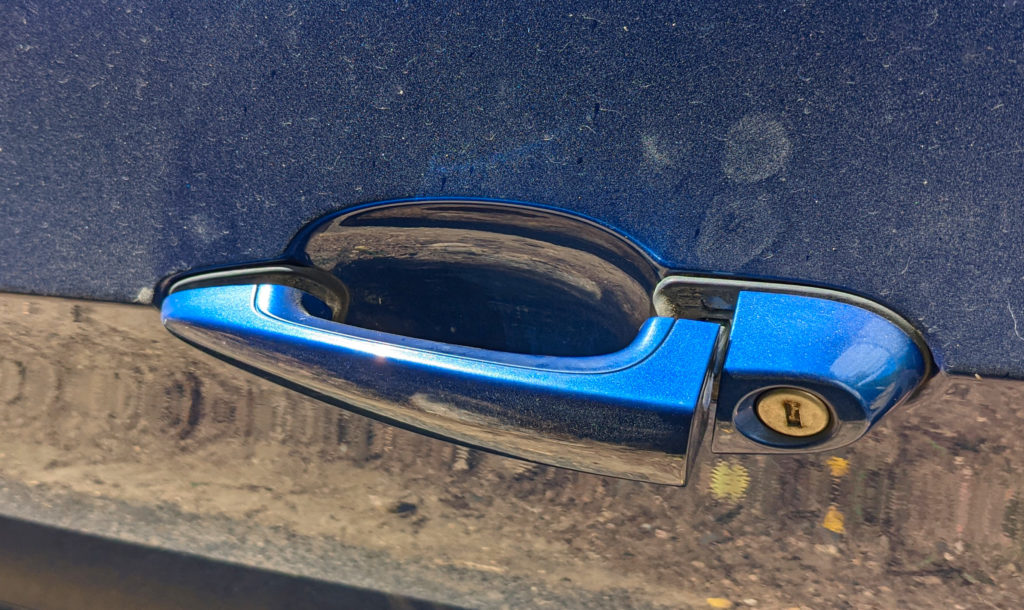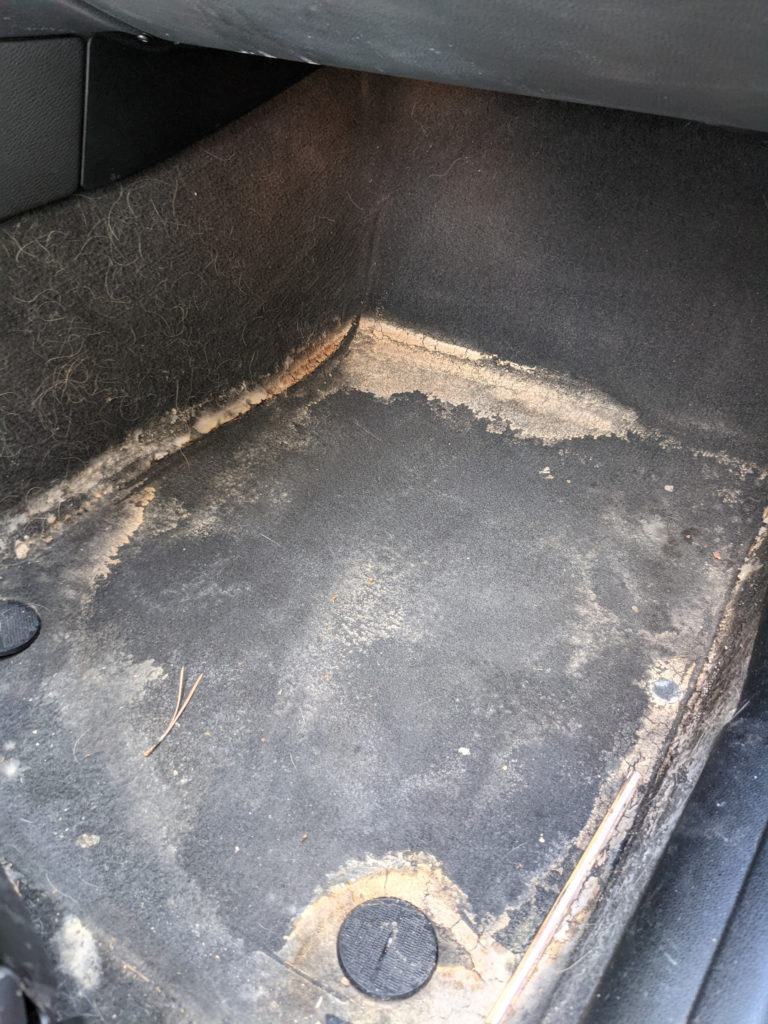When we moved to the Rockies, my favorite niece in Colorado was driving a 2007 3 Series coupe. This was the first model year for the E92, and this one was well equipped: adaptive xenon lights, Montego Blue Metallic paint, black leather interior, xDrive, sport seats, and the magnificent N52 three-liter naturally aspirated inline six engine. I’m a big fan of that engine, with its sandwiched magnesium-aluminum block, variable valve lift and timing, intelligent oil-pump and water-pump control, and straightforward packaging.
The only reason I didn’t start angling to acquire the car myself was that it lacked a clutch pedal.
Visiting the town where my niece lives, I’d see the car on the road, or parked in front of her house. Then one day I noticed that it had moved to the side of the house, while a smart-looking red Mini was parked in front. Then the blue coupe moved no more.
That was more than three years ago.

First year E92 nose previews the updated look that will arrive in LifeCycleImpulse (LCI) sedans and wagons.
How does this happen—rather, why does it happen? What is it that drops a regularly-used car below the line of feasibility, taking it from a spot in the driveway to a spot in the side yard? The car hadn’t suffered a massive collision, nor a grenaded drivetrain, nor a “loose rod” (as in, “Jeez, there’s a connecting rod hanging out of the engine block!”) nor a fire; no clear proximate cause of its idleness could be seen.
So I suppose it’s the straw count: one last straw, one last failure or weakness or irritation added to an existing heap of relatively minor faults finally becoming too great a burden (either financial or cognitively) for the owner to bear. After tolerating the cracked windshield, dodgy accessory wiring, the torn carpet and stained console, occasional rough running, and maybe a water leak, the final injury need not be huge. It just has to exceed an invisible limit, cross a very thin line.
I think the blue coupe’s terminal fault was a broken door handle.
In blissful ignorance of that stack of straws, and still seeing the charms I that had moved me on first meeting, I thought that perhaps I could rescue this car from its entropic fate. I proposed to adopt the blue coupe, and my niece cheerily agreed. We’ll work out the financial details once the car’s on its feet again; perhaps it’ll be my salty-roads runabout, and I’ll buy it, or perhaps the used-car market will still be elevated once the car’s off-putting issues are addressed, in which case we’ll sell it and divide the proceeds.
In other words, we had a plan.
I showed up at her place with a recovery kit: fresh big battery, air compressor, lots of diagnostic software and hardware, tools, and a can of ether. (If you’ve not run diesel tractors or lived in northern climes, you may not be familiar with ether. It is very flammable and very volatile, perfect for inducing combustion in engines that aren’t getting much ignitable fuel on their own. But the ether—aka starting fluid—would not be the first recourse; I’ve had the same can for a decade.)
The familiar search for the key fob followed, and eventually it turned up, but since the coupe’s battery was a net-negative electricity source, we had to open the door and the trunk with the laser-cut key. I attached a powerful charger to the battery terminals, but the charger said no battery exists here in a small semaphore-set of lights. I had planned for that possibility, and replaced the battery with the fresh one. I hooked the charger to the posts in the engine compartment, then checked the dipstick to be sure that the engine had oil.
Hahaha, just kidding: N52s don’t have dipsticks. I settled for examining the static decal on the windshield proclaiming the last service. The date and mileage on the sticker seemed reasonable, and I mashed the starter button. The engine cranked, but did not start. Various warning lights festooned the instrument cluster.
I stopped cranking and looked at all things underhood, just in case the coil wire was loose or missing.
Hahaha, just kidding: N52s don’t have coil wires. After a few more fruitless attempts at drawing life from the engine, I removed a portion of the air-intake system to allow more access to the intake-air filter. I set the can of ether on the fender just to let the car know that I was serious, as an Old West gambler might array a pistol next to his chips. But another crank still produced no sound of a self-sustaining mechanism.
Kwwhwooosossh! Kwwhwooosossh! Two shots of starting fluid into the airbox preceded another mash on the starter button… but there was no change to the engine’s response. Well, these cars do have fairly long airways; perhaps the vapors haven’t reached the cylinders yet. I called an assistant to handle the button-pressing (lord knows she’s good at it in normal life), and resumed my station at the front bumper, aerosol can drawn and ready.
After two more efforts, I heard a cylinder fire—just one, but that felt like we were turning the corner. Pretty quickly thereafter we had the engine running on its own 40-month-old gasoline. It even idled. Now the car is at my garage, and the smoothing of its rough edges has begun.
An early question: What happened to the passenger-side carpet?
Oh, well: It turns out that many of the spares for (and take-offs from) our wagon are also applicable to this car. So many, in fact, that I’m getting rid of stuff! Surely there’s a carpet somewhere in this melange.—Marinus Damm
[Photos courtesy Marinus Damm.]























